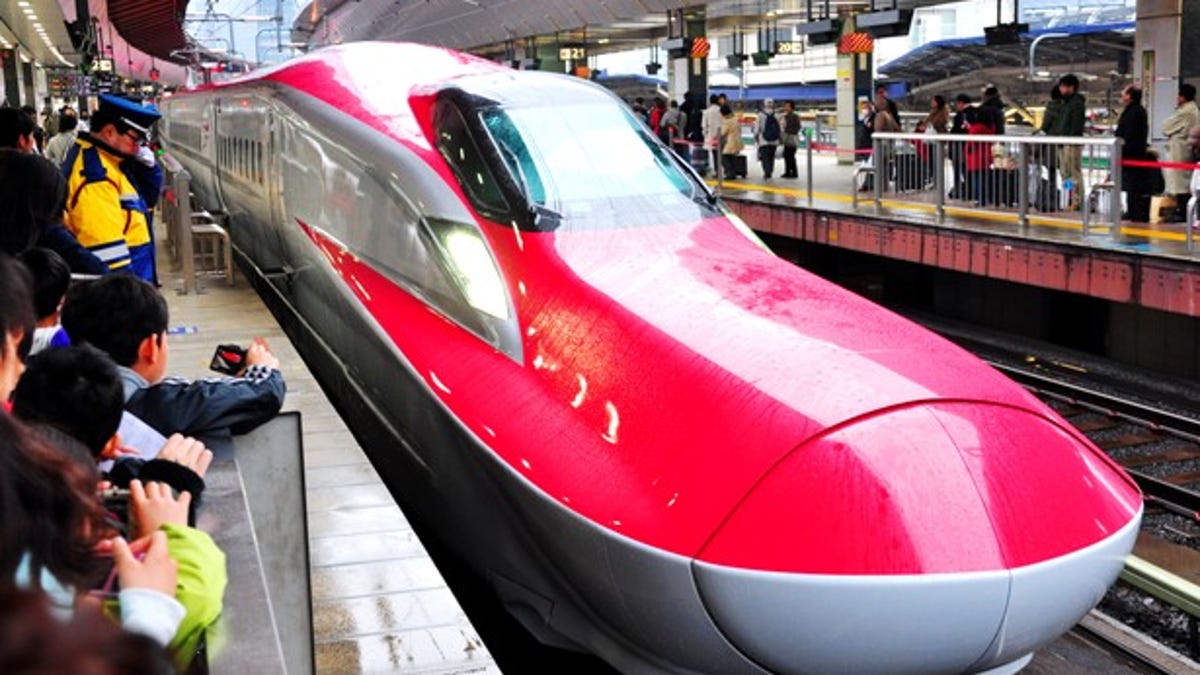200-mph red bullet trains thrill rail-mad Japan
The new E6 Series Super Komachi has a sleek design and a top speed of nearly 200 mph. Operators hope it will help the quake-ravaged north.

TOKYO--The crowd lining the end of Tokyo Station's platform 22 is four people deep.
They're jostling for position with their cameras -- trainspotters, parents, and children alike -- to get a shot of Japan's latest bullet train: the Series E6 Shinkansen, known as the Super Komachi.
They all bought tickets for the privilege of entering this part of the sprawling terminal that serves 380,000 passengers daily, and operator JR East has to deploy extra security guards to keep them a safe distance from the glistening new locomotive.
With services to northern Japan on the Akita Shinkansen Line, the Super Komachi debuted earlier this month as one of Japan's fastest commercial trains.
It has been traveling at 300 kph (186 mph) and will eventually run at 320 kph (198.8 mph), also the new operational speed of the Series E5 Hayabusa, among the world's fastest along with France's TGV.
To reduce the aerodynamic pressure when it enters tunnels at high speeds, the seven-car E6 has a nose that's 42 feet long; it also dampens noise. Meanwhile, the active suspension system cuts cabin vibration.
Its interior resembles other Shinkansen trains but it has full-color LED displays with travel information as well as larger restrooms to accommodate wheelchair users.
The crimson livery represents the red masks of namahage ogres, which are folklore characters and costumes seen at New Year's in Akita Prefecture.
The name Komachi is a nod to Ono no Komachi, a legendary poetess and beauty said to have been born in Akita some 1,200 years ago.
The crimson trains cut the travel time from Tokyo to Morioka by up to 15 minutes. JR East hopes it will inspire more people to visit northern Japan, parts of which are still recovering from the devastation of the 2011 Tohoku earthquake and tsunami.
Rail remains one of the most popular means of short- and long-distance travel in Japan, and the bullet train boasts an excellent safety record. For instance, there have been zero fatalities or injuries due to train accidents on the Tokaido Shinkansen Line in nearly 50 years of service, during which hundreds of millions of passengers have used it.
Check out more pics of the Super Komachi in our gallery below.

